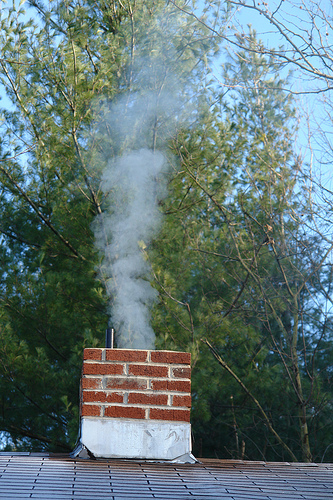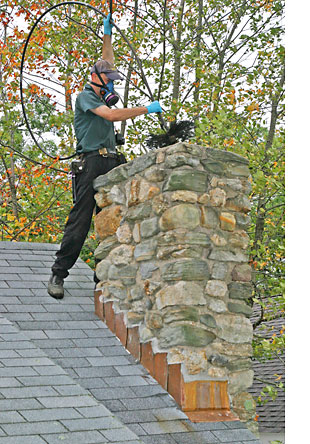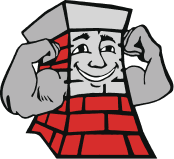How to Achieve a Flawless Chimney System
 A wood-burning fireplace can be the source of a lot of joy; but if the fireplace smokes, it can also become a source of frustration and a hazard. Many people don’t realize that when a chimney operates the way it’s supposed to, smoke virtually never blows into the room – it always goes up the chimney. Modern homes are sealed more tightly today than what was previously the norm, and one problematic result is that the tight seal can interrupt proper chimney drafting. It is important to focus on building a chimney system for the purpose of maximum efficiency, from the ground up.
A wood-burning fireplace can be the source of a lot of joy; but if the fireplace smokes, it can also become a source of frustration and a hazard. Many people don’t realize that when a chimney operates the way it’s supposed to, smoke virtually never blows into the room – it always goes up the chimney. Modern homes are sealed more tightly today than what was previously the norm, and one problematic result is that the tight seal can interrupt proper chimney drafting. It is important to focus on building a chimney system for the purpose of maximum efficiency, from the ground up.
There is a way to build a venting system that works flawlessly, and the following are components required to achieve that goal:
- Choosing the location of the chimney is essential. You don’t want it to be built on an outside wall because it hinders the operation of the fireplace. The chimney becomes filled with a cold column of air that pushes downward until warmed rather than allowing smoke in a freshly lit fireplace to rise. Place the chimney within the building envelope, rather than on the outside.
- Build the chimney with a straight path to the fireplace or wood stove. Whenever there are offsets or changes in direction, flow resistance is created.
- Make sure the chimney is higher than any other part of the roof. The height should also clear any wind flow obstacles. When the height of the chimney is correct, the chimney will be able to produce a stable draft.
- Install a rain cap or chimney cap on the chimney, in order to prevent vulnerability to strong wind pressures.
- Choose a low emissions fireplace insert or stove that is qualified by the Environmental Protection Agency (EPA). The characteristic you should look for is a unit that prevents smoldering; a common cause of back draft is smoldering firewood.
- The flue must be the appropriate size for the appliance, whether a fireplace insert or a wood stove. There should be no leaks in the connection. When these two features are correct, there should be a strong draft in the chimney that moves combustion materials up and away from the house.
- The flue should be insulated properly, to ensure that air in the chimney is warm enough to flow quickly up the flue.
 Make sure the house has a balanced ventilation system. Two features that can interrupt proper chimney ventilation by overly depressurizing the home are large exhaust fans and exhaust-only ventilation systems.
Make sure the house has a balanced ventilation system. Two features that can interrupt proper chimney ventilation by overly depressurizing the home are large exhaust fans and exhaust-only ventilation systems.- Have your chimney cleaned and inspected at least once a year. Every time a fireplace is used, some amount of creosote is deposited in the flue. If the creosote is not removed, it becomes more difficult and expensive to remove and can cause hazardous chimney fires as well as chimney blockage.
- Properly operate and maintain the appliance. Improper usage can negate the effectiveness of even the most ideal chimney system.
Contact our qualified chimney professionals if your fireplace doesn’t work properly. There are many possible issues that could be causing the problem, and we will help you identify what’s wrong.
Northeastern Chimney, Inc
37 Cody Street, West Hartford, CT 06110
Phone: 860-233-5770


